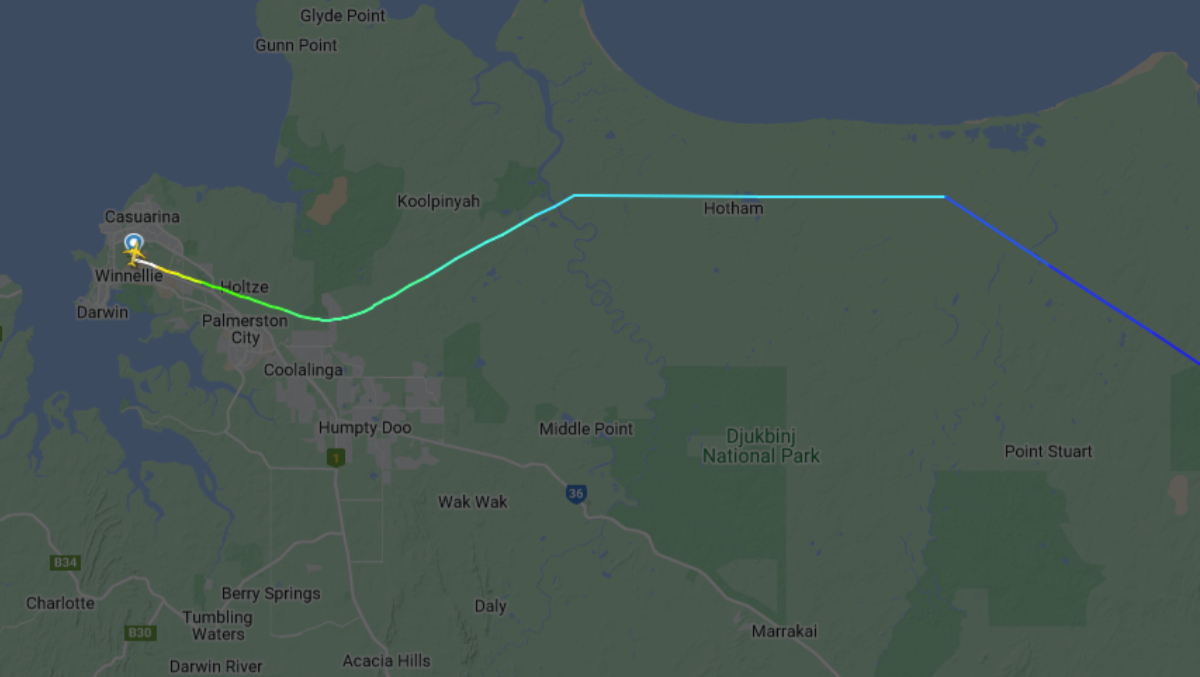The ATSB has launched an investigation after a Qantas 737 was in the process of leaving Darwin Airport at the same time as a Jetstar A320 was preparing to land on the same runway.
The incident significantly occurred at 12:17 am on Wednesday when the air traffic control tower was closed.
Images from Flightradar24, above, appear to show the outbound aircraft taking a significant detour from its usual route to avoid a collision.
In a statement released on Friday, the ATSB said it would examine “all available evidence” to determine the extent of the communication between the two narrowbody passenger planes.
“A final report will be released at the conclusion of the investigation,” it said. “Should a critical safety issue be identified during the course of the investigation, the ATSB will immediately notify relevant partie so that appropriate safety action can be taken.”
The statement is yet to clarify exactly how far into the take-off the Qantas 737 was, but it did state the incident is considered an “aircraft separation issue”. Flightradar24 lists the outbound aircraft’s actual time of departure as 12:47 am and the inbound plane’s landing time as 12:59 am.
It comes just a month after Australian Aviation reported how the ATSB would monitor the introduction of new take-off procedures at Sydney Airport after a British Airways 787 and Qantas A330 flew too close to each other in September last year.
The incident saw the Boeing aircraft’s collision avoidance system become activated before its first officer spotted the Airbus.
A report into the loss of separation occurrence’ revealed how an unusual set of circumstances led to the mix-up, including that the traditionally longer-haul A330-200 was operating a domestic flight meaning it had a higher climb performance.
The ATSB’s director of transport safety, Stuart Macleod, said, “Maintaining separation in high traffic terminal areas, such as Sydney, requires that both controllers and flight crews remain vigilant, maintain open communications, and use the available systems and tools to minimise the risk of errors.
“When sequencing departures, controllers should consider a number of factors, including how the flight duration (and the associated fuel load) will likely affect aircraft climb performance.”
















